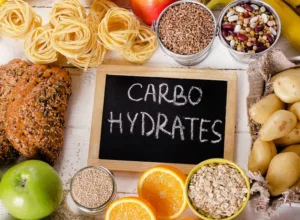Many fitness enthusiasts dream of achieving the seemingly contradictory goals of losing body fat and gaining muscle mass simultaneously. This process, known as body recomposition, allows you to sculpt a more defined and toned physique. While it may seem challenging, it’s certainly achievable with the right approach to diet, exercise, and recovery.
You’re trying to lose body weight while trying to build body mass? Even though you’ve been watching what you eat, hitting the gym consistently, and lifting weights, the numbers on the scale are decreasing but that muscular physique you were going for just doesn’t seem to be happening.
For the body to truly build muscle mass, you’ll need to lift relatively heavy weights to a point where muscles actually reach a point of fatigue and failure—at that time your muscles will tear and break down. It is during this repair process where you will become stronger and more defined.
Losing body fat while increasing muscle mass can seem like a difficult goal, but it can be done. Before we begin – one key thing to remember through your journey is that it’s going to take time and hard work. “Losing weight and building muscle is not an easy task and there’s not quick solutions. Be patient and think of the bigger picture. If you want to lose weight and build muscle, then we have to understand key healthful practices that can managed long-term and sustained for a lifetime”. We’ll walk you through some key principles to help you reach your goals.
Understanding Body Recomposition
Traditionally, weight loss and muscle building have been viewed as separate phases. People often focus on creating a calorie deficit (burning more calories than they consume) to lose fat, potentially leading to muscle loss as well. Conversely, building muscle typically involves a calorie surplus (consuming more calories than burned) for optimal growth.
Body recomposition flips this script. The goal is to create a slightly negative or neutral calorie balance while prioritizing strategies to minimize muscle loss and promote muscle growth. This delicate balance requires a focus on both nutrition and exercise.
Dietary Strategies for Body Recomposition
Protein is King: Protein serves as the building block of muscle tissue. Aim for a daily protein intake of 1.5-2 grams per kilogram (0.68-0.9kg) of body weight. Lean protein sources like chicken, fish, eggs, legumes, and low-fat dairy should be staples in your diet.
Don’t Skimp on Carbs: Carbs provide readily available energy for your workouts. Complex carbs like whole grains, fruits, and vegetables are essential for fueling intense exercise and promoting muscle recovery.
Healthy Fats are Friends: Don’t fear healthy fats like avocados, nuts, seeds, and olive oil. These provide essential nutrients for hormone regulation, satiety, and overall health.
Micronutrients Matter: Ensure a balanced intake of vitamins and minerals to support overall health and muscle function. Include plenty of fruits and vegetables in your diet.
Meal Frequency: There’s no one-size-fits-all approach. Experiment with different meal frequencies, such as 3 larger meals or smaller, more frequent meals, to find what keeps you feeling energized and satiated throughout the day.
Hydration is Key: Proper hydration is crucial for all bodily functions, including muscle recovery and performance. Aim to drink plenty of water throughout the day.

 Sample Meal Plan for Body Recomposition
Sample Meal Plan for Body Recomposition
This is just a sample, and you should adjust portion sizes and specific foods based on your individual needs and preferences.
- Breakfast: Greek yogurt with berries, granola, and a scoop of protein powder
- Lunch: Chicken breast with brown rice and roasted vegetables
- Snack: Apple slices with almond butter
- Dinner: Salmon with quinoa and steamed broccoli
- Snack: Cottage cheese with chopped vegetables
The Exercise Prescription for Muscle Growth and Fat Loss
Strength Training is Essential: This is the cornerstone of body recomposition. Focus on compound exercises that work multiple muscle groups at once, such as squats, deadlifts, lunges, rows, presses, and pull-ups. Aim for 2-3 strength training sessions per week, targeting all major muscle groups.
Progressive Overload: To keep challenging your muscles and stimulating growth, gradually increase the weight, sets, or reps over time. This ensures your body continues adapting and building muscle.
Don’t Neglect Cardio: While not the primary focus, moderate-intensity cardio like brisk walking, swimming, or cycling can help with overall calorie expenditure and improve cardiovascular health. Aim for 2-3 sessions per week.
Prioritize Rest and Recovery: Muscle growth and repair happen during rest periods. Aim for 7-8 hours of quality sleep each night and schedule rest days between workouts for optimal recovery.
Check Out Our List Of The Best Supplements For Building Muscle, Shredding Muscle, Recovery, And Great Health, and Wellness Products! Purchase ifbnewsfeed.org‘s apparels Here: ifbnewsfeed.org

 To begin, one of the most obvious places to begin is with a goal. Sound easy, right? Well, often times –we want things to happen fast, but sometimes-quick goals are not really built for long-term success. “Often times a person looking to lose an excessive amount of weight in a short period of time can do more harm than good to the body. Meaning we see people creating unhealthy eating patterns, too low calorie diets and restricting foods to the extreme”.
To begin, one of the most obvious places to begin is with a goal. Sound easy, right? Well, often times –we want things to happen fast, but sometimes-quick goals are not really built for long-term success. “Often times a person looking to lose an excessive amount of weight in a short period of time can do more harm than good to the body. Meaning we see people creating unhealthy eating patterns, too low calorie diets and restricting foods to the extreme”.
- Let’s get away from that mentality. Instead, let’s start with a realistic, sustainable goal and aim for a steady weight loss of one to two pounds per week.
- Step two is really understanding your calorie needs. Your body needs calories and it actually takes calories to burn calories. The tricky part here is we don’t ever want to go too low. There’s a perception that following an ultra-low calorie diet is the best way to lose weight.
- “However, very low calorie intakes can actually lower your metabolism and cause your body to hold onto weight. Also, if you are not consuming enough energy through your diet, then your body may break down other tissues, like muscle or fat to be used as energy – which is extremely counterproductive to trying to build muscle“. Overall, it’s important to understand your calorie needs and adjust accordingly for weight loss.
Next, what you eat matters. Focus on a healthful diet, which has an emphasis on balance, variety and moderation. Weight loss does not mean that you have to cut out foods or whole food groups. This restrictive mentality often leads to highs and lows with food as well as fluctuations with weight. Instead, include a balance of all three macronutrients: “carbohydrates, protein and dietary fat.
People like to turn down carbohydrates, but carbohydrates are a critical nutrient, which helps fuel your body, help supply energy to fuel strength training and supply energy for muscle development”. Also, as you know – protein is a key nutrient in weight management as it helps to help support satiety, meaning it can help you feel fuller longer. Protein is also essential to help build muscle and support muscle recovery.
Lastly, a weight loss journey includes a balance between food as well as physical activity. The awesome thing is we can actually change our rate of metabolism with activity. Metabolism can increase with increased muscle mass and increased level of activity. Therefore, “it’s important to include cardio as well as resistance exercise. In short, muscle is metabolically active and burns more calories, compared to fat. Therefore, the more muscle you have, the more calories your body burns. Consider increasing load as your body adapts and becomes stronger”. This is a great way to burn calories as well as build muscle.
Overall, losing weight and building muscle can be done. Remember, be patient and think long-term. Here are three tips to help you meet your goals –
- Start with a realistic, attainable and sustainable goal
- Honor your hunger and satiety and be mindful of your overall nutrition needs
- Aim to consume a high-protein diet starting with a protein-rich breakfast and adding high-quality protein to meals and snacks
Additional Tips for Success
- Track your Progress: Monitor your weight, body composition (if possible), and strength training performance to gauge progress and adjust your plan as needed.
- Be Patient: Body recomposition is a gradual process. Don’t get discouraged by slow progress; consistency is key.
- Stay Motivated: Find activities you enjoy and surround yourself with supportive people who encourage your goals.
- Seek Guidance: Consider consulting a registered dietitian or certified personal trainer for personalized guidance on diet and exercise routines.
If you want more muscle-building information, we have a muscle-building newsletter. If you want us to walk you through the entire process of building muscle, check out our IFBNewsfeed.Org Program. It includes a 3-months workout routine, diet guide, recipe book, tutorial videos for every exercise, and one-on-one support in our online community.
More About Shedding Fat and Building Muscle Contents
- Lose Weight By “Strength Training Muscles” And “Burning Calories” To Maintain A high Metabolism Level
- Is It Possible “To Lose Body Fat And Gain Muscle” At The Same Time? Understand

- Get $200 With Your 1st Order Because Your Health Matters
- Best Supplements For Muscle Building, Strength & Champion Performance
- Best Supplements For Intense Energy, Performance & Endurance
For More News And Daily Updates, Follow IFBNewsfeed.Org on Facebook, Twitter, and Instagram. Comment, Like, And Share With Everyone Who May Need To Be Updated With The Most Recent Fitness/Bodybuilding/Powerlifting And CrossFit News.







